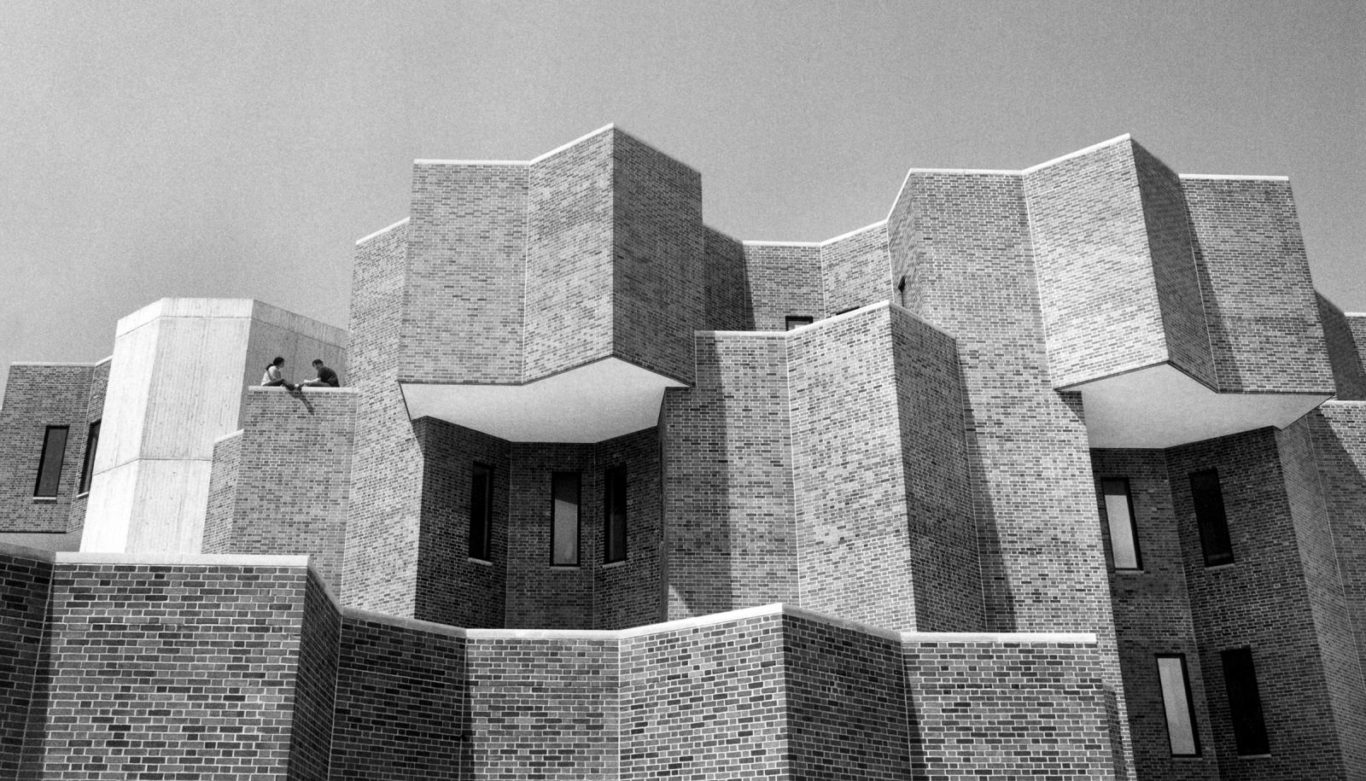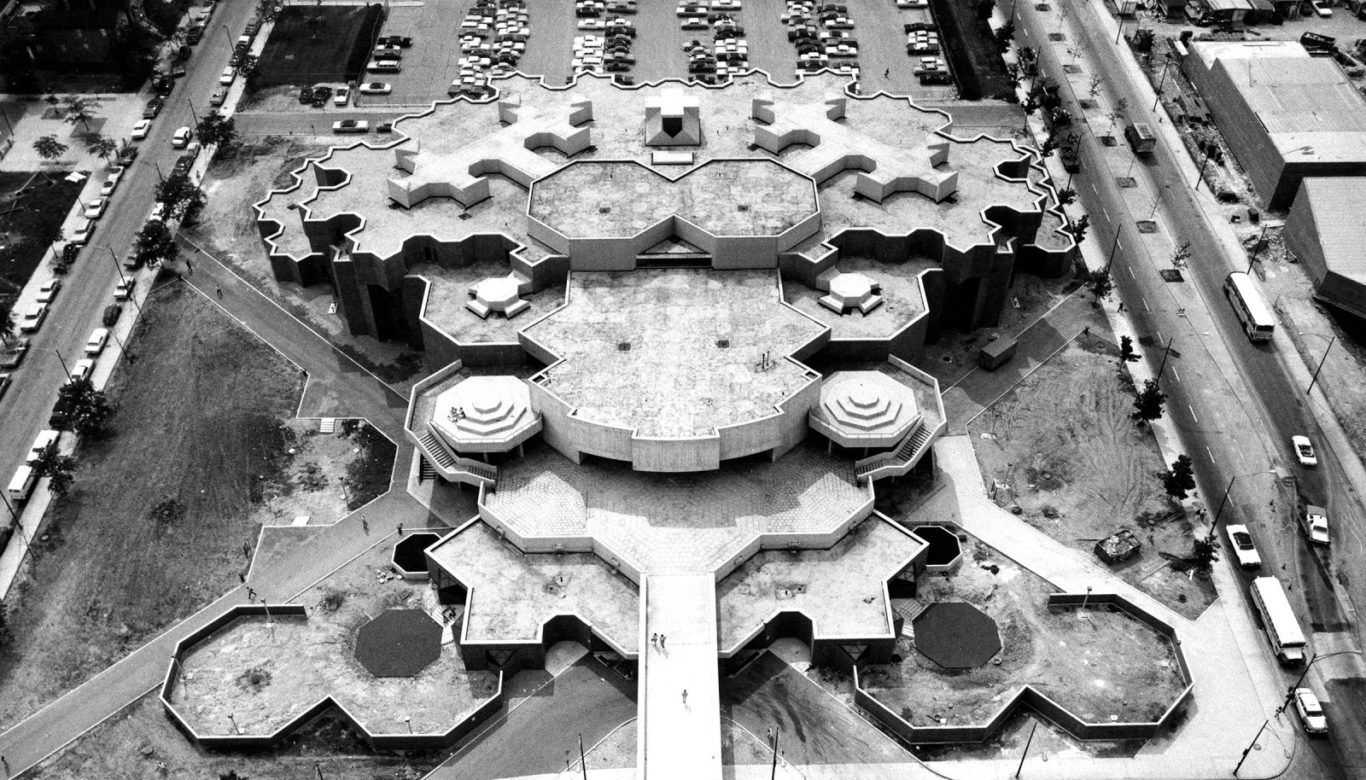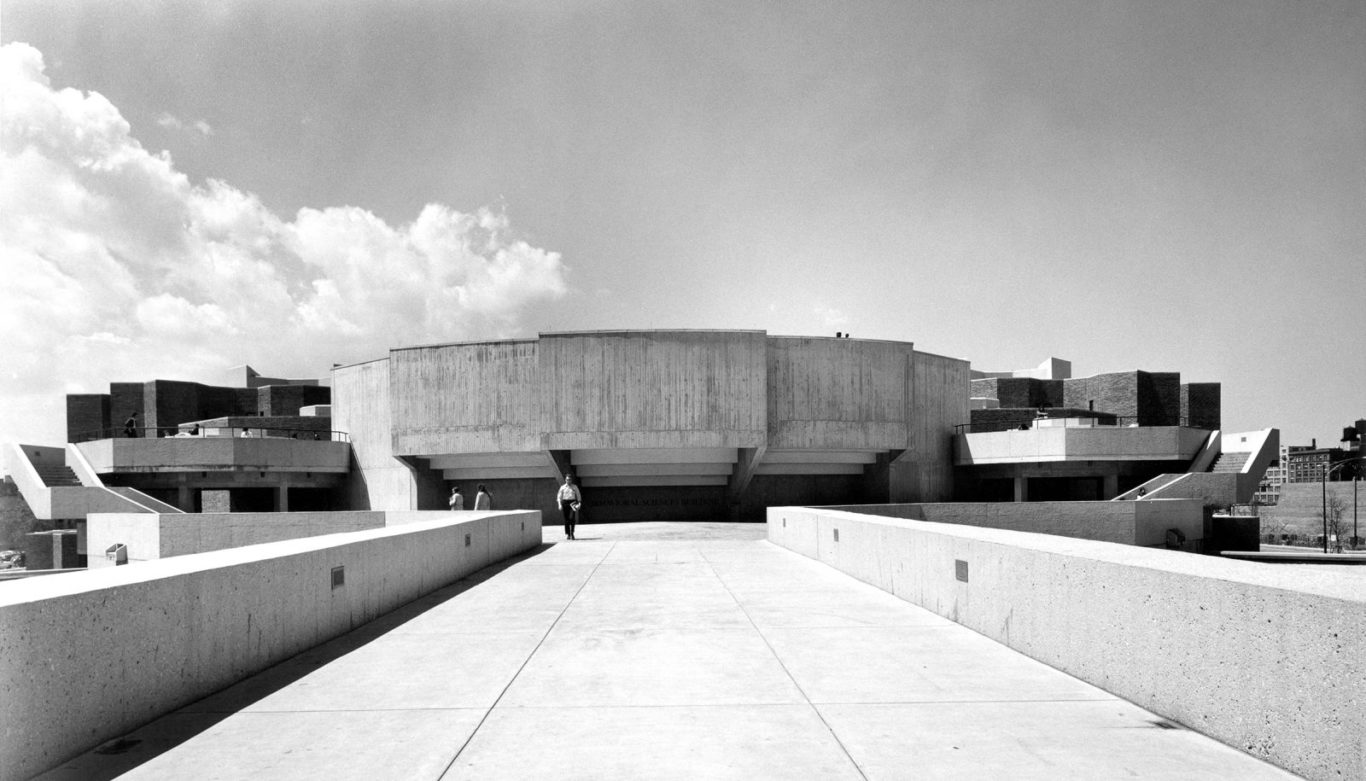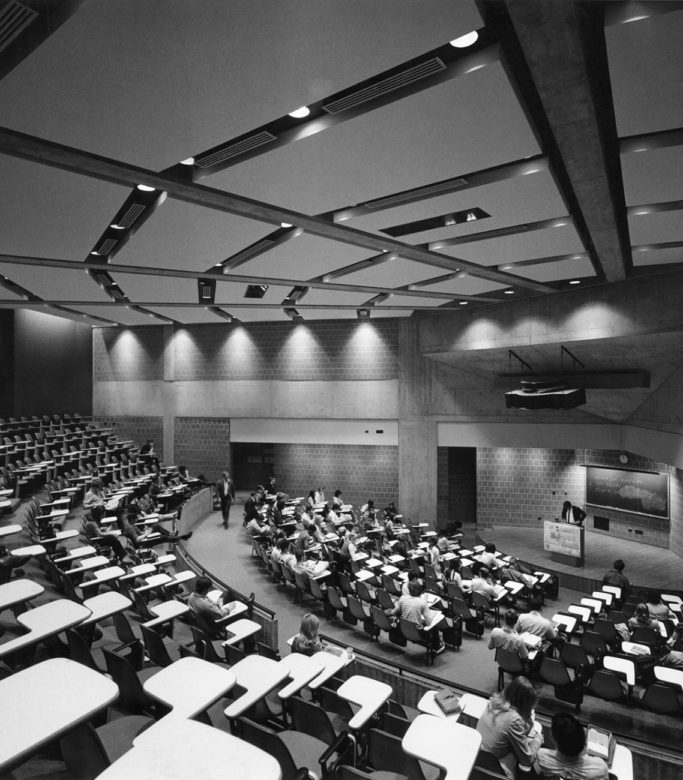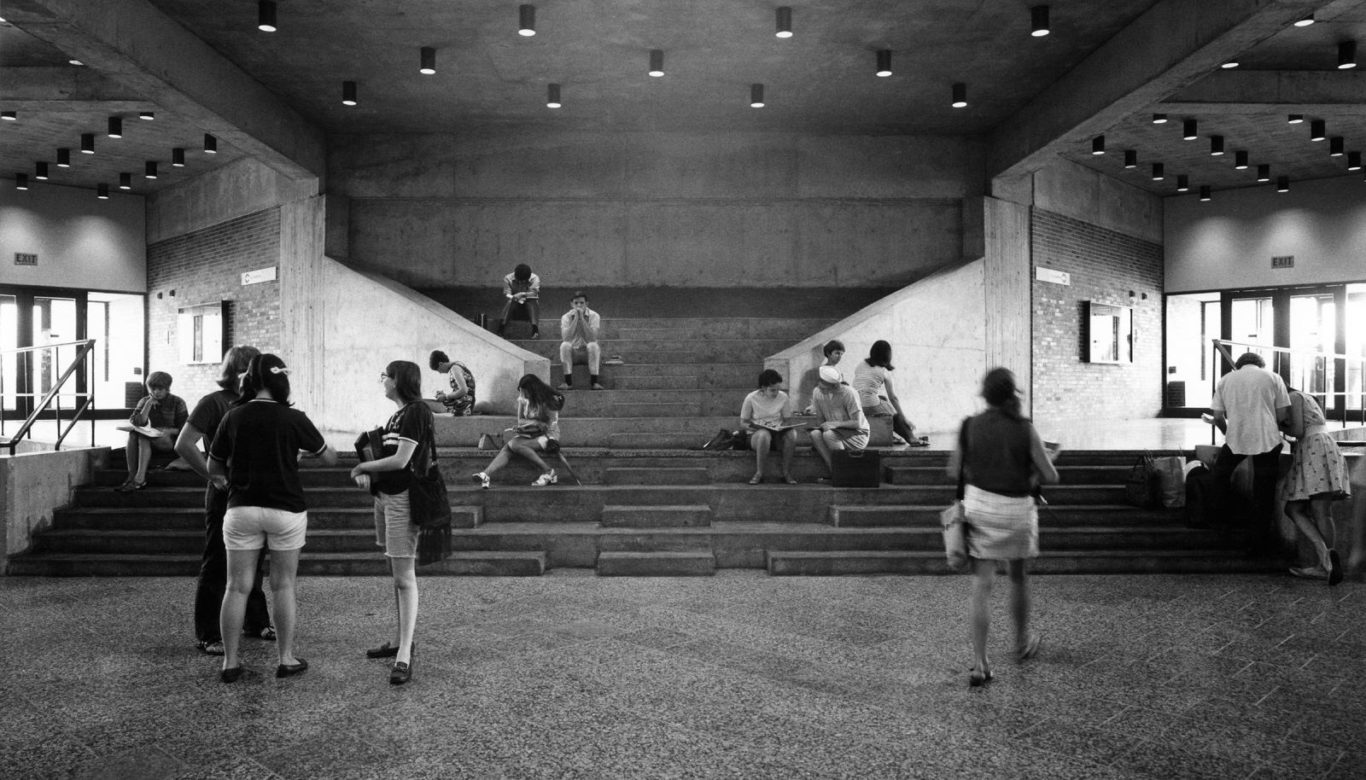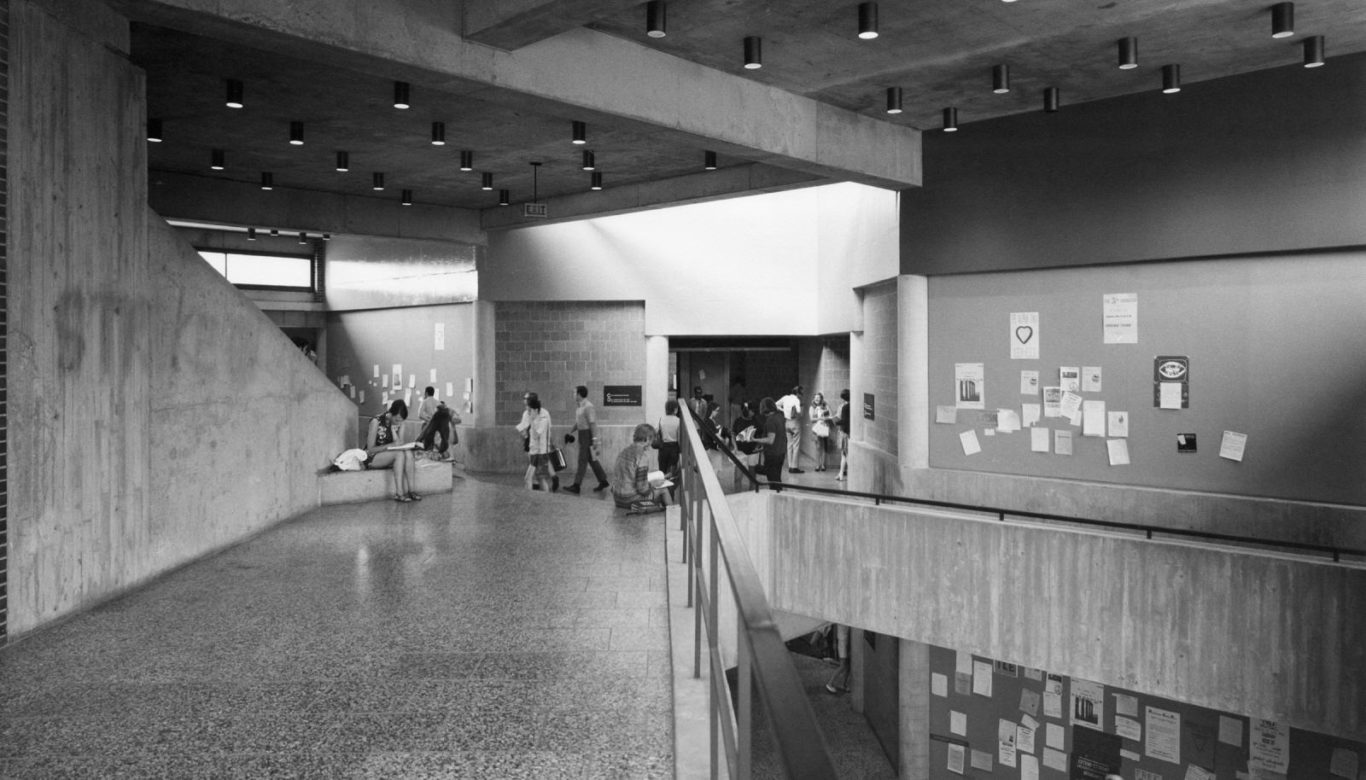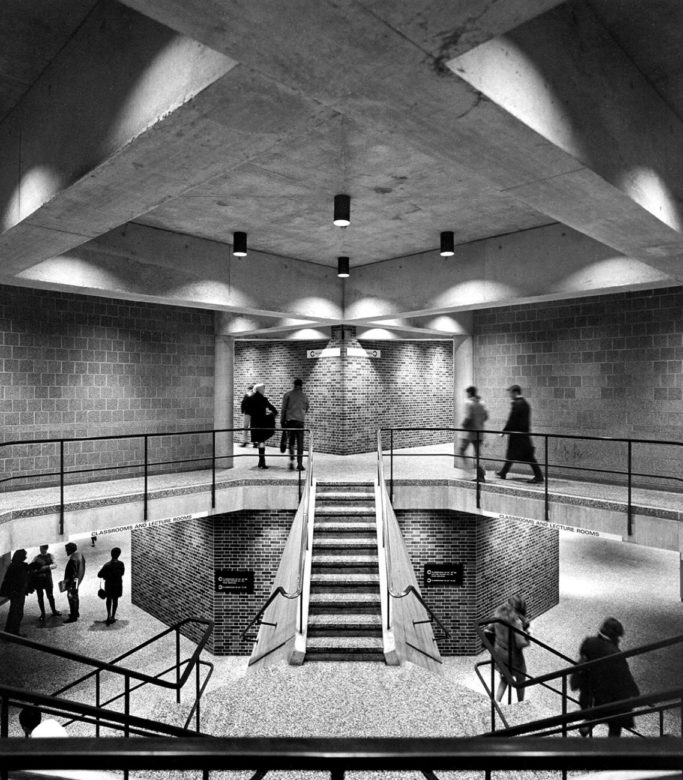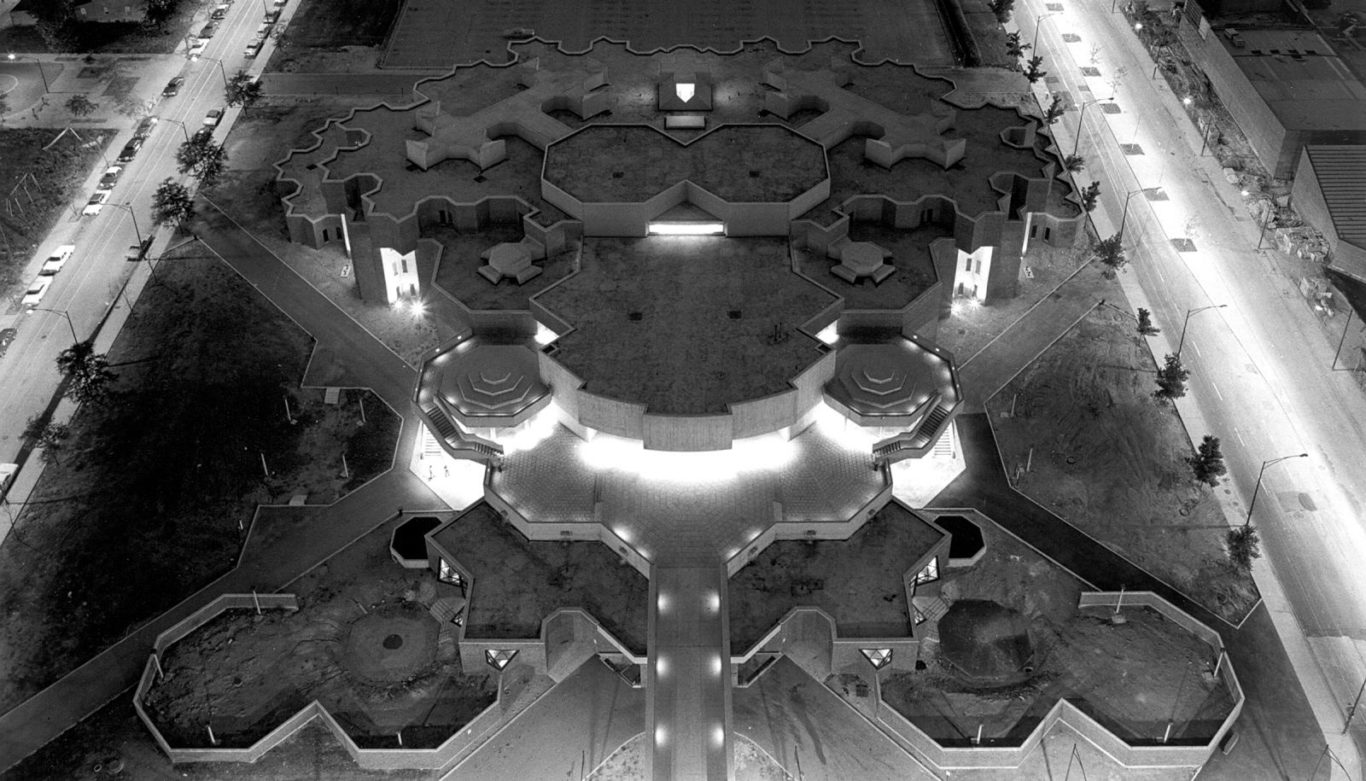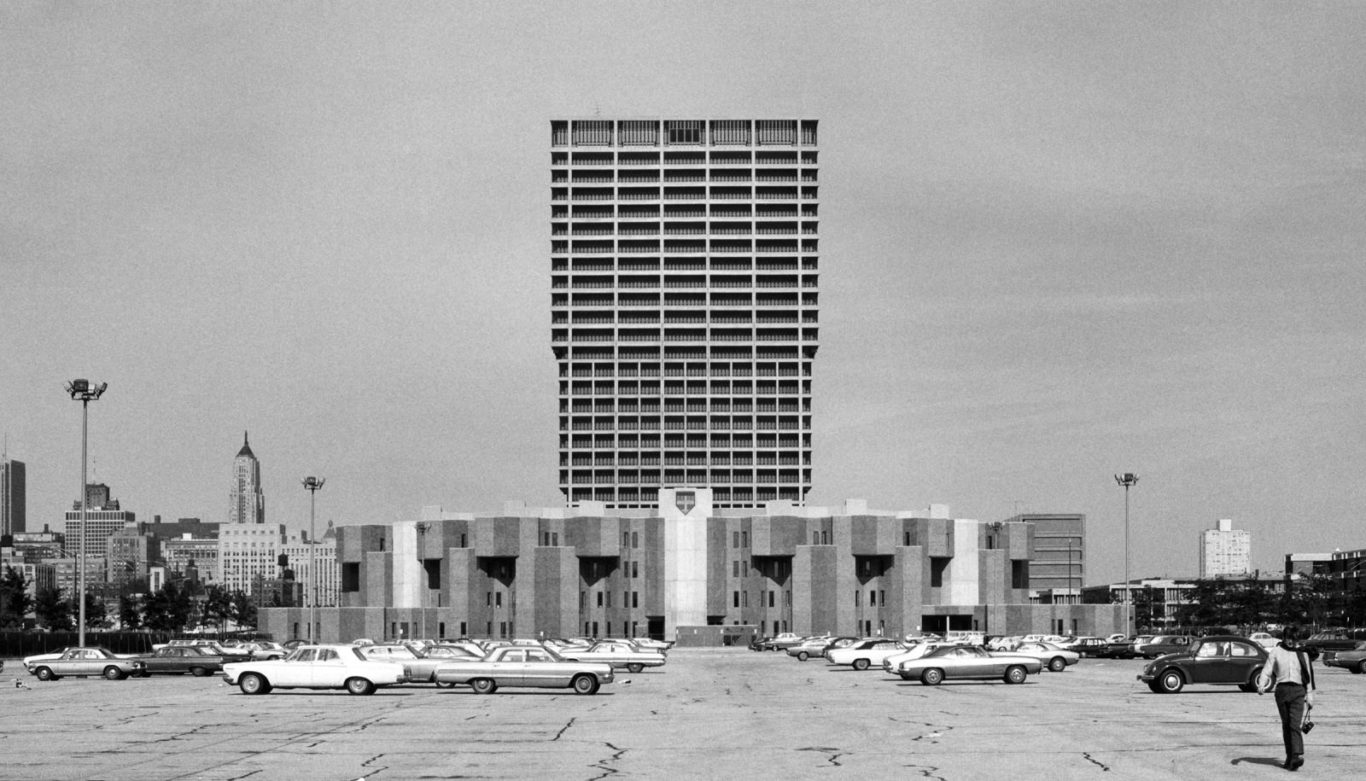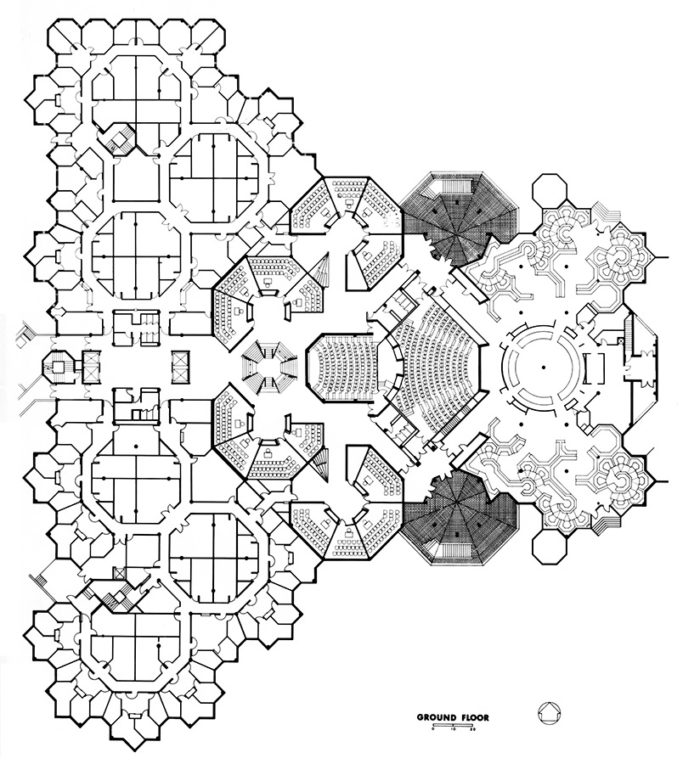In the 1960s and 70s, SOM designed the master plan and many of the buildings for the University of Illinois campus on Chicago’s Near West Side. Architect Walter Netsch led the effort, which focused on shaping an urban campus that would benefit from direct connections to transit and surrounding neighborhoods.
Netsch’s Behavioral Sciences Building, created eight years after the original master plan, was designed to provide several different environments for study and learning. The building contains offices and laboratories for the departments of sociology, psychology, anthropology, geography, and urban studies, as well as a number of lecture halls, a 700-seat cafeteria, and informal gathering spaces. Main access is via a pedestrian bridge, which is connected by a “traffic interchange” ramp to the raised walkway system on the central campus.
The structure is made of poured-in-place concrete, though most of the walls are made of brick. The layout of the building is based on Netsch’s Field Theory, a design system that entails rotating squares into complex forms.
